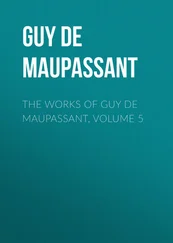The most obvious difference is movement. The dead can’t dance, while the living gaily cavort. In early cultures, such as those of ancient Egypt and Greece, movement was often taken as a sign that the object in motion, even if it was the sun moving across the sky, wanted or intended to move, and thus that it had some kind of mind willing it. But there is some subtlety here: for a dead body can also move. If we lift up the arm and let go, it will fall. If we hold the body up on two feet, and wave its arm, it will stand and wave. If we push up the two ends of its mouth it may even give us a ghoulish smile (assuming rigor mortis has not set in). The essential difference between the living and the dead is not movement itself, but rather spontaneous or willed movement. Willed movement is a sign of mind, a kind of mind energy. It was this concept of self-generated motion that early cultures used to divide the world into the animate and the inanimate. If spontaneous movement was not due to living humans or animals, then it was attributed to souls, spirits, devils or gods. A stone is not living because it does not move of its own accord – even a rolling stone is not living if it has been pushed down a mountain – but an avalanche can suggest the work of an angry god or devil. The apparently spontaneous movement of wind, lightning, sun and planets was associated with spirits or gods, by the ancient Egyptians, Chinese, Greeks and American Indians. Indeed the distinction between living and non-living things was not as clear or important then as it is now, because the world was full of supernatural spirits, and even inanimate objects could be seen to have intentions and desires.
We should note that the type of movement regarded as ‘self-generated’ is dependent on the theory being used. Thales, known as the ‘grandfather’ of Greek philosophy and science who was active around 600 BC, thought that a magnet had a soul because it moved iron. It may be because all things move in apparently spontaneous ways in certain circumstances (e.g. when dropped) that he famously said, ‘all things are full of gods’. Around 350 BC, Aristotle, perhaps the greatest ever philosopher and scientist, described God as the ‘unmoved mover’, the first source of free, unforced movement and change. Today we have gone to the other extreme, and many scientists believe that there are no spontaneous movements or change, even within humans (because each change is caused by a prior change via some mechanism), and thus there is no need for gods, souls, or spirits. However, the modern concept of energy has replaced gods and spirits as the source of all movement and change in the Universe.
When our caveman-penseur presents his beautiful new hypothesis (that the difference between life and death is self-generated movement) at neighbouring caves, it is not long before some overly smart cavewoman points out the flaw in his argument, that when he is asleep or knocked unconscious, he has no self-generated movements yet is, to all appearances, alive. She may continue that anyone with any sense knows that in such circumstances the way to tell the living from the dead is from subtle, internal movements: breathing, the pulse, and the heartbeat. These internal motions are still used today in the diagnosis of life or death, and it was the investigation of them, and their associated processes, that led to our modern concepts of life and body energy.
Breath was central to ideas of life and energy in most early historical cultures. In Egypt, breath was associated with ka , a soul which separated from the body after death. Breath-energy was known as chi in ancient China, thymos and later pneuma in Greece, and prana in India, although each of these terms meant different things to the different cultures involved. The first entry and final exit of breath from the body were synonymous with life and death. In Greek legend, the first man was fashioned by Prometheus from earth and water, but the soul and life were breathed into him by the goddess Athena. If breathing is stopped, it leads to loss of consciousness and finally death, and so it would have always been obvious that life depended directly on breathing. But breathing is associated with much more than just staying alive. Changes in breath and breathing occur during most emotional states, as is recognized in phrases such as: ‘she took his breath away’; ‘panting with eagerness’; ‘gasping with astonishment’; ‘sobbing with grief’; and ‘yawning with weariness’. These emotions are associated with sounds and chest movements, which might lead us to believe that all emotions are located in the chest and expressed in sound (as in the phrase ‘get it off your chest’). We may also consider talking itself to be a kind of breath, as words appear to be carried by the breath from the chest. In pre-literate and semi-literate cultures, thought was often considered to be a kind of talking, perhaps because much thinking was done out loud. And as talking and expressions of emotion were connected with breathing, then thought and emotions could be associated with the breath in the chest.
In the pre-Classical Greece depicted in the Iliad and Odyssey , thought and emotion were seen as a kind of breath-energy known as thymos , which was stored in the lungs or chest ( phrenes ), and breathed forth as speech, anger or grief. The Greeks appear to have conceived thymos to have been a hot vapour, coming from the body or blood, an idea perhaps inspired by the vapour in breath visible on a cold day, or by the vapour escaping from gushing blood. Thus, we have images of the spirit and soul as a partially visible vapour, as in the soul escaping from the body in a dying man’s final breath. The root of the modern word ‘inspiration’ means both breathing in and the receipt of divine or supernatural thought and feeling. This usage may derive from Homer, where often exceptional thought, feeling, courage, strength, anger and dreams were derived from the gods, who ‘breathed’ them into humans, as thymos to be stored in the chest/lungs, before the humans exhaled them out as speech, feeling, willed action, or thought.
Breath may well have been important to conceptualizing life in another way. It is (usually) invisible, yet when we blow hard our breath can move things and we can feel it against our hands. In this respect it is like the wind, which was often conceived of as the breath and will of gods. Thus, breath was an invisible source of movement outside the body, and might therefore act as an invisible source of movement within the body, to move the limbs and vital functions.
In China breath-energy was known as chi (pronounced chee, as in cheese, and sometimes written as qi ) and chi was a fundamental component of the Universe. According to the Huangdi Neijing : ‘That which was from the beginning in heaven is chi ; on earth it becomes visible as form; chi and form interact giving birth to the myriad things’. There are many different types of chi , sometimes earthly and material, at other times heavenly and immaterial, and its effect can be seen in the growth of a plant, the power of thought, or the energy that activates any process. Life originates from an accumulation of chi ; and death from its dissipation. Chi also means ‘air’, but air was thought to be a non-material empty space; thus chi is not a material substance, but rather a process, force, or energy. Within the body chi is known as true chi , and was derived both from air by breathing, and from food and water by ingestion. The Huangdi Neijing states: ‘True chi is a combination of what is received from the heavens and the chi of water and food. It permeates the whole body’.
Читать дальше












